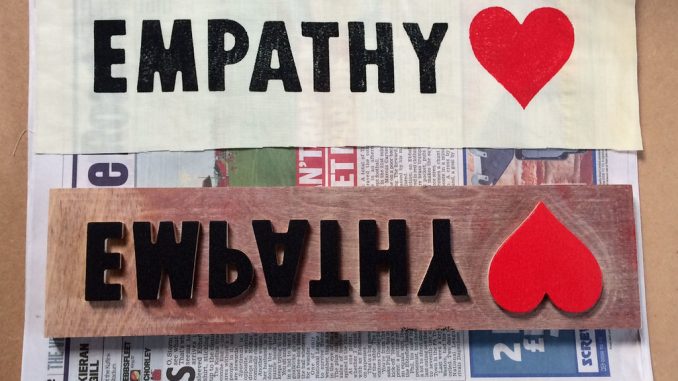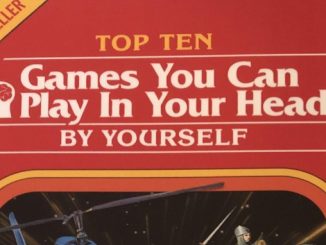
This month’s theme invites to think about others, or perhaps more specifically ‘the other’. To consider ‘Diversity’ we must first think about ourselves; how we are the same as others, and how we differ from them. Many of the articles you will read are about how difference has been a divisive force, leading to worsened life chances for some and automatic privilege for others. But these articles are also about how we can start to find solutions to the injustices and disadvantages caused by the division of difference – not by pretending we are all the same, but by embracing difference, and the richness it can bring to all of our lives.
One of the greatest skills we can bring to bear on this task is Empathy. Here are a few things to think about.
How to Get Empathy
Roman Krznaric’s book, ‘Empathy: Why it matters and how to get it’, argues that empathy can be a force for major social change, as well as enhancing our personal relationships and our creativity. The heart of the book, is his laying out the six habits of highly empathic people.
Empathy: Why it Matters and How to Get It by Roman Krznaric is available on Amazon
Habit 1: Cultivate curiosity about strangers – Take the opportunity to talk to people who you do not usually come across. You’ll need to move beyond the usual conversational gambits about the weather to really start to understand other worldviews, though.
Habit 2: Challenge prejudices and discover commonalities – Are you taking a stereotypical view when you first meet or think about another person? Try to think about someone as a individual rather than member of a group or a ‘label’ such as ‘single parent’ or ‘economic migrant’.
Habit 3: Try another person’s life – Ludogogy is obviously a big believer in the power of experiential learning. While you might not want to go to the extreme of being down and out in Paris and London like George Orwell, you can find opportunities to ‘swap’ lives with others for a while. Why not try a ‘sleep out’ for a homeless charity or find volunteering opportunities which give you an experience of other lives.
Habit 4: Listen hard—and open up – Empathy in conversation is a two-way street. We must master the art or ‘radical listening’, being really present for the other person, rather than waiting for them to finish speaking to we can have our say. Also we must make ourselves vulnerable in the conversation, not hiding our feelings, and revealing ourselves fully to the other person to better form an empathic bond.
Habit 5: Inspire mass action and social change – Alongside education of the young in how to be empathic, social media perhaps offers the best opportunity for us to harness the power of empathy for large-scale change. However, given his organisation of a campaign against it, it is safe to say that Krznaric did not think the Facebook’s ‘Empathy Button’ was the correct way for this to play out.
Habit 6: Develop an ambitious imagination – Hard though it can be, one of the most important groups of people whom we can practise empathy, are those we dislike, and whose views we find the most unacceptable. Regular practice of this will make us more empathic and better able to utilise the ideas that arise from our empathy.
Types of Empathy
So what exactly is empathy, and is there more than one kind? Empathy as a concept is quite new, and over the 100 years or so it has been a thing, there have been a multitude of different definitions, but a quite useful to approach is to think of it as the human capacity for putting yourself into the place of another in order to better understand their lived experience. But even within that definition, there are considered to be three different types of empathy.
Cognitive – This is the empathy of the mind, not the heart. Sometimes called ‘perspective taking’ this is about an intellectual understanding of someone else rather than a felt one. Doctors and those who need to operate with professional detachment may need to cultivate this find of empathy
Emotional – This is the empathy where you literally feel along with the other person, as if their emotions were contagious. Some people are pre-disposed to this kind of empathy and it can be very overwhelming for them.
Compassionate – Potentially the most useful kind of empathy, this is not only the ‘middle ground’ between the two types of empathy above, but is also completed by action. Once the person who uses this kind of empathy has understood intellectually and emotionally, they are also spontaneously motivated to do something about it.
The Empathy Museum (and Library)

Krznaric’s Habit 3 may well have been one of his inspirations for founding The Empathy Museum. A roaming installation of empathy exhibits, the museum has been touring the world since 2015, literally giving its visitors a chance to walk in another person’s shoes. After being fitted with another person’s shoes by an assistant, the visitor dons some headphones and spends a few minutes listening to the story of someone totally unlike themselves, a refugee, a sex worker, a surgeon, while walking around in their shoes.
Other exhibits have included the human library – the opportunity to talk to someone about their life, a meal in a totally darkened room, to step into the experience of a blind person, and a chance to work on a cellphone assembly line.
Krzranic characterises the museum as
“a playful, experiential adventure space for stepping into the shoes of other people and looking at the world through their eyes.”
The Empathy Library (https://empathylibrary.com/ ) is an online resource full of recommendations and reviews of books and films which will deepen your empathy.
What can Jesse Schell tell us?
A large proportion of Chapter 18 of Jesse Schell’s Book of Lenses could be considered to concern the topic of Empathy. The Chapter is entitled ‘Worlds Contain Characters’. One interesting exercise he carries out is to compare the great characters from books, film and games in three lists. He points out that while book characters often reveal their thoughts to us verbally, film characters do so largely through observed actions, and some game characters have very few thoughts at all – largely because we do all their thinking for them.
The Avatar is a special class of game character, and like the film of the same name, it allows us to project ourselves into the world of the character, from within the character itself. Sometimes the feeling of identification can be so strong that players wince when their avatar is injured.
In games which are specifically designed to enhance this empathic effect, maybe to prepare us for potential real world empathy, designers should therefore pay attention to design techniques which can make this effect as strong as possible.
There are two forms of Avatar which Schell explores as being ideal for player projection – The Ideal Form, archetypes which we may have dreamt of being and The Blank Slate, a character with little detail which gives the player the maximum opportunity to make it their own.
Lens #75 is The Lens of the Avatar. Schell recommends that the designer asks these questions:
- Is my avatar an ideal form likely to appeal to my players?
- Does my avatar have iconic qualities that let a player project themselves into the character?
If we are designing a game to provide experiential learning about real-world empathy we could add a third question?
- Will this avatar give the player an experience of inhabiting ‘the other’ which they can learn from?

An excellent example of a game designed to provide an empathic experience of ‘the other’ is ‘Hellblade: Senua’s Sacrifice’. Senua is a classic Ideal Form – a Pict warrior with formidable fighting skills. Where she varies is that the experience of playing Senua has been designed with the help of neuroscientists, mental health specialists, and people with lived experience of the symptoms of psychosis. The voices in her (your) head never stop while you are playing, and she is constantly stalked by a sinister entity she knows as ‘The Darkness’.
Tend and Befriend Games
In contrast with the hack and slash of Hellblade, here are some games designed to instil empathy in an altogether gentler way, or just allow you to ‘tend and befriend’ with other players.
Kind Words – a game in which players can share their challenges and/or respond to others with comforting messages. All the content is created by real players, apart from those in the brief tutorial
Animal Crossing – life simulation, the latest version of which allows you to raise your community of cute animals along with up to seven other online players.
Please Knock on my Door – invites you to play as a person suffering from stress and depression, as you help them through work and trying to reach out to friends.
Bury Me My Love – interactive fiction designed for handheld devices which tells the story of Syrian refugee Nour and her husband Majd as Nour undertakes a perilous journey to safety.
While many computer games are designed to exploit the ‘fight or flight’ stress response. Tend and befriend can also be a response to stress but instead of adrenaline, it produces oxytocin, inspiring one to tend for the vulnerable (usually offspring) and befriend, reaching out for social support.
- James Bore – The Ransomeware Game - 13th February 2024
- Ipsodeckso – Risky Business - 23rd January 2024
- Review – Luma World Games - 15th December 2023





Be the first to comment